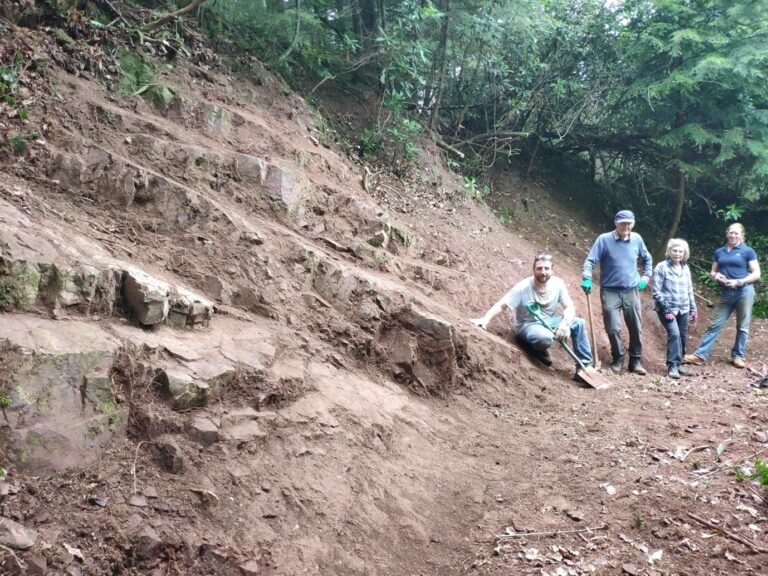Friends of the Quantocks were approached by Garry Dawson back in the autumn when we celebrated taking ownership of Bicknoller Quarry. Garry and his fellow volunteers at the Somerset Geology Group (SGG) have offered to help develop interpretation material for the quarry, as it’s already a site of interest for them.
We invited Garry to introduce SGG and the work they do.
~ ~ ~
The Somerset Geology Group was established in 1984, initially as the Geological Advisory Group of Somerset Wildlife Trust (SWT). It worked in partnership with Somerset Environmental Records Centre (SERC) at SWT from the late 1980s to identify the county’s Local Geological Sites (LGS), then known as Regionally Important Geological Sites.
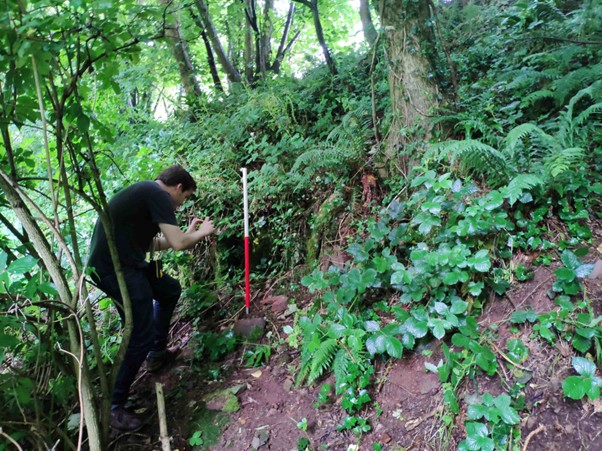
Members of SGG have also documented temporary geological exposures from pipeline and road building projects, cleared LGS of vegetation and compiled a Bibliography of Somerset’s geology.
Wendy Lutley and Garry Dawson revived the group in 2016, acting as joint volunteer Coordinators until 2025. Garry now acts as sole Coordinator of our network, supported by a small volunteer coordinating group. We are a network rather than a formal membership organisation, have no formal constitution and do not organise talks and field visits. We circulate an Update to our network members and partner organisations once or twice yearly and try to arrange a meeting once a year.
Local Geological Sites
In Somerset there are two different designations which provide for geological conservation: LGS that may be of local to regional importance (with which SGG is involved) and Sites of Special Scientific Interest (SSSIs) overseen by Natural England, that are recognized as being of national importance for the earth sciences. SSSI are protected by law against loss or damage. LGS do not have any similar protection but are known to local planners who have to take them into account in all planning decisions. This may, for example, result in quarry faces being retained and accessible after a development.
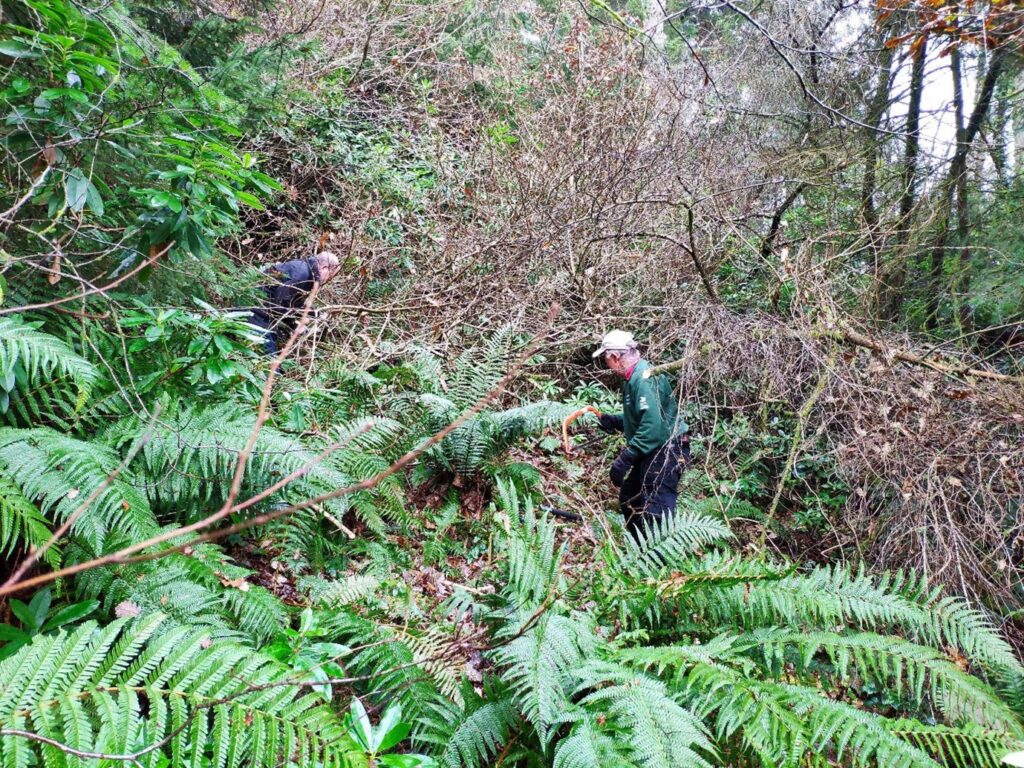
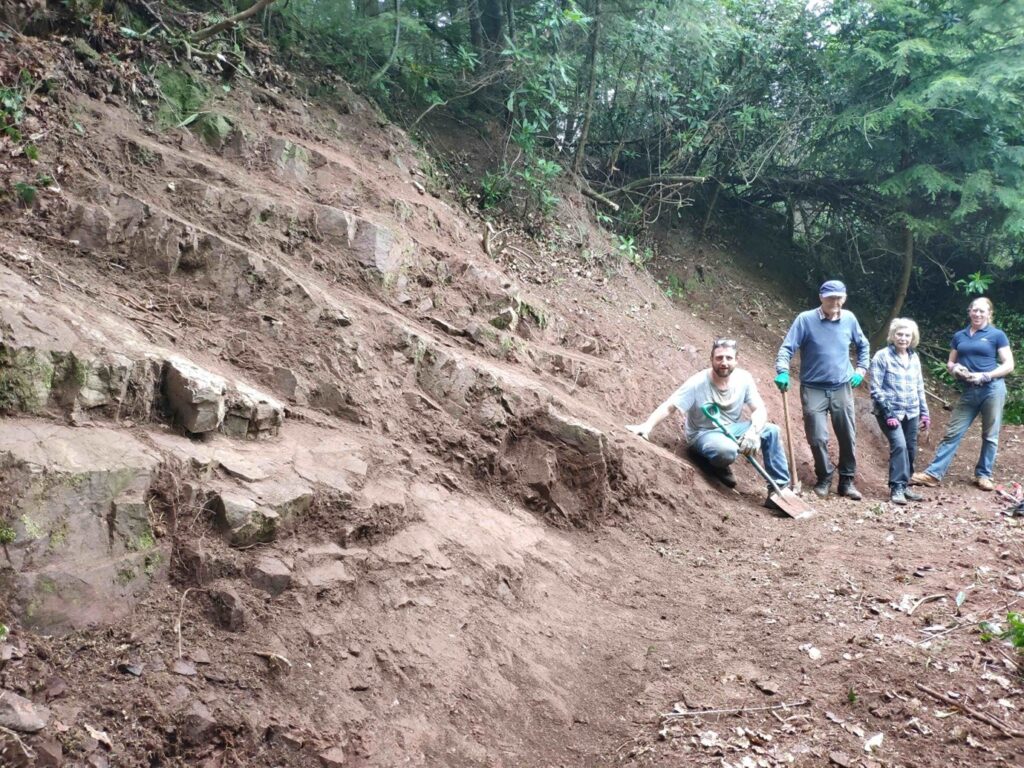
Before and After pictures of the clearance of an LGS at Great Wood, Quantock Hills. Courtesy of Forestry England and the hard work of members of SGG, Quantock Countryside Volunteers and the Open University Geological Society.
Scientific, Educational, Historic, Aesthetic
The main focus of our activity between 2016 and 2022 has been working in partnership with SERC to carry out a major review of Somerset’s existing LGS. They were originally mostly identified during the late 1980s and 1990s and then adopted in local plans.
The LGS review project has been guided by a Steering Group, with reconfirmation and any adjustment to boundaries overseen by an LGS Panel. We have used key questions to assess the sites against the four national criteria for LGS – that is the Scientific, Educational, Historic and Aesthetic value of the sites. Initially the research into the sites, site visits and completion of site assessment forms was done by a part-time geological assistant employed by SWT and university geology student volunteers during their vacations. All was going well but then Covid intervened and the final two years of work had to be completed by SGG Members – all retired people with geological interests and backgrounds. A considerable achievement in the circumstances, for which we are very grateful.
We reviewed 234 Somerset LGS and following the review we have retained 221 LGS which met our review criterion. The final report on the project and the five area reports that summarise the overall conservation interest for that part of Somerset to which the individual LGS contribute can be seen on our website.
Hangman Sandstone
The LGS cover the whole of Somerset (see Figure 1) and represent rocks of all ages from the Silurian to the Eocene. Twenty-four of these (11% of the total number), mostly with Devonian age rocks, are within the Quantock National Landscape area. There are several others, often on Triassic age rocks, close by.
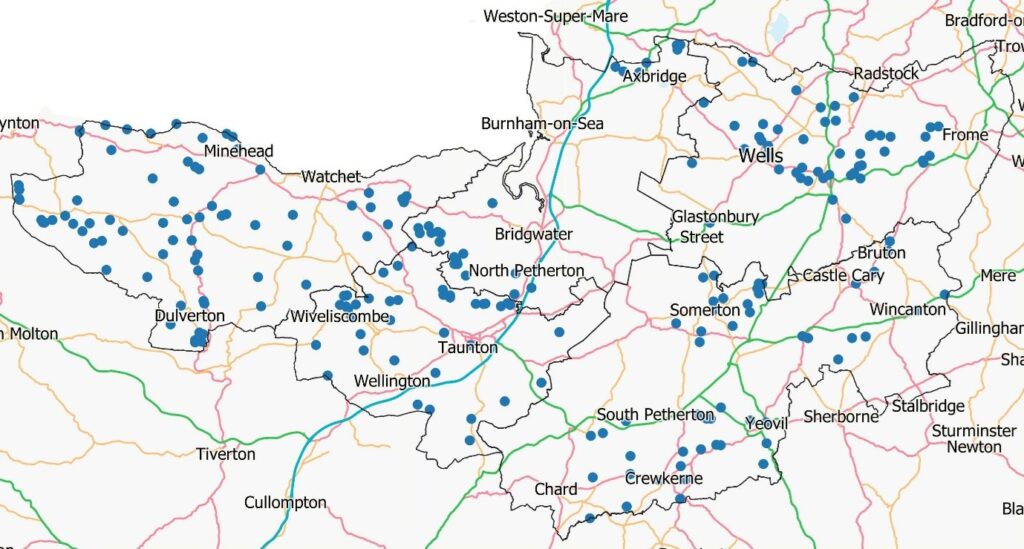
LGS have been selected for their geological value and many are not accessible to the public for health and safety reasons or may be privately owned. However, the recent good news that Bicknoller Quarry LGS has been acquired by Friends of the Quantocks means that visitors to the quarry will be able to examine the Devonian Hangman Sandstone rocks which give the northern part of the hills its distinct character and landscape, that is so enjoyed by locals and visitors alike.
Garry Dawson, Co-ordinator of the Somerset Geology Group
For more information – https://somersetgeology.org.uk/
